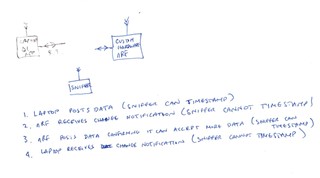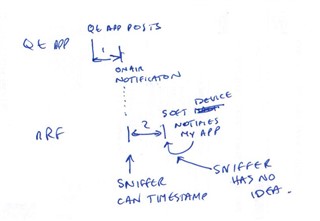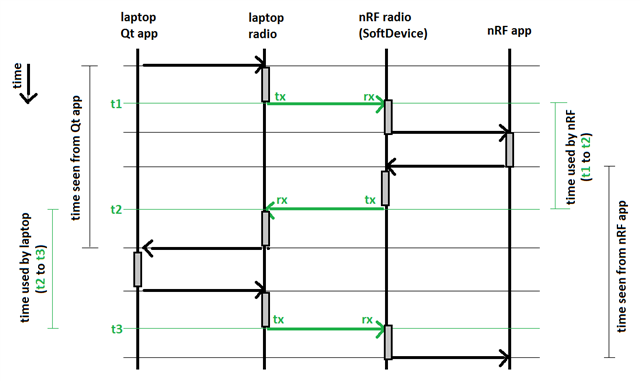Hi folks,
I have a system basically working with the following setup:
#define MIN_CONN_INTERVAL MSEC_TO_UNITS(7.5, UNIT_1_25_MS)
#define MAX_CONN_INTERVAL MSEC_TO_UNITS(7.5, UNIT_1_25_MS)
#define SLAVE_LATENCY 0
I have a custom service with four characteristics that allow data to get from Nordic to PC (running Linux, not Windows or OSX) with handshaking in the following way:
PC Puts data in char1
Nordic gets new data and then:
Nordic writes value to char2 which tells the PC the Nordic has got the data and has enough space in its buffer for the PC to send more data. PC then pus updated version in char1 and so on...
The other two characteristics work for data being sent the other way.
Now, this works fine apart from the fact that there's a big old delay between data being put in a characteristic and the other end getting notification of that change. One problem is I don't know whether this is a delay between the Nordic picking up what the PC has changed or the PC picking up what the Nordic has changed.
I have put measurements at the PC end so I can tell that from a characteristic changed by the Nordic to tell the PC it is ready for more data it takes 140ms between updates. ie it is a round trip of 140ms, which is far too long!
Nordic writes to char2, PC updates char 1. Between the PC picking up that change in char2 and updating char1 there is less than a millisecond.
From the Nordic picking up the change in char1 and putting a new value in char2 to twell the PC it can update char1 there is less than a millisecond.
So, there is either:
A delay in the soft device updating the characteristic after its API is called or:
A delay in the PC picking up the change in the characteristic or:
A delay in the PC from the application writing to the characteristic and it appearing "on air" or:
A delay in the soft device from picking up the change in char1 to sending it to my software running on the Nordic.
Or some combination of these.
Are there any settings I have not tweaked that might be causing this? If so, what migt they be?
Can anyone think of anything I can do to track down exactly where the problem might be please? If I could toggle a pin on the PC when it picks up a change in char2 that might help I guess, but the days of parallel ports are long gone! ;)
Many thanks.





